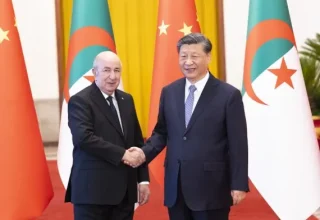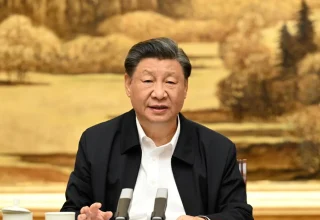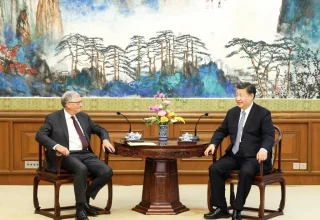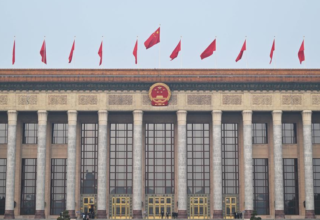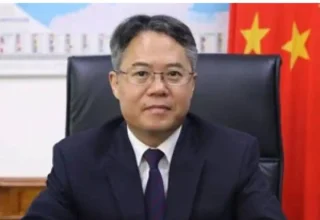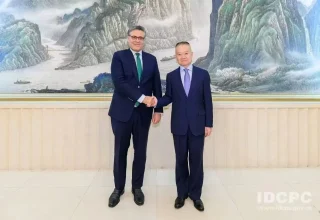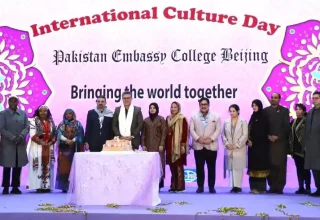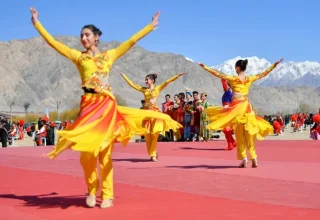
As a Pakistani journalist with a deep interest in cross-border cultural harmony and development, my recent journey to China’s Xinjiang Uyghur Autonomous Region was nothing short of eye-opening. From the bustling, modern skyline of Urumqi to the serene, history-laden landscapes of Kuqa, I witnessed a region that seamlessly blends tradition with transformation, faith with freedom and heritage with hope.
The first thing that struck me upon arrival was how much Xinjiang felt like home. From the aroma of sizzling kebabs to the sight of naan being baked in traditional tandoors, Xinjiang’s cuisine reflects a rich fusion that resonates deeply with Pakistani tastes. Local Uyghur dishes like polo (a rice and meat dish) hand-pulled noodles and roasted lamb bear remarkable similarities to Pakistani food, both in flavor and preparation.
The warmth and hospitality of the people here further bridged the cultural connection. Whether in the streets of Urumqi or the markets of Kuqa, locals welcomed me with cheerful smiles, friendly gestures and often a steaming cup of tea, a tradition we Pakistanis deeply cherish.
Urumqi, Xinjiang’s capital is a vibrant metropolis with impressive infrastructure. Its gleaming skyline, wide boulevards and advanced urban planning reflect China’s commitment to high-quality development. I had the pleasure of visiting the iconic Urumqi Grand Bazaar, a symbol of Xinjiang’s historic role in international trade that is now revitalized for modern commerce.
The Grand Bazaar isn’t just a marketplace, it’s a global exhibition centre. Here, I saw traders from different countries, products from across Asia and a convergence of cultures under one roof. Local handicrafts, silk scarves, dry fruits, carpets and jewelry stood alongside goods from Central Asia, the Middle East and beyond. The bazaar bustled with energy, echoing with multiple languages and lined with local and international visitors alike.
One of the highlights of my visit was watching a mesmerizing Uyghur traditional dance performance in the open courtyard of the bazaar. Dancers in colorful attire moved to the rhythm of age-old melodies, expressing joy, unity and cultural pride. It was a powerful testament to how ethnic identity and traditional heritage are preserved, celebrated and showcased in Xinjiang.
My experience with religious life in Xinjiang was equally enlightening. I visited mosques, including the Grand Mosque of Urumqi, where I joined the local Muslim community in offering prayer. The mosque was clean, well-maintained and filled with devout worshippers, a scene that starkly contradicts the negative narratives often portrayed in Western media.
There are thousands of mosques across China and my personal visits confirmed that Muslims here are free to practice their religion. From attending sermons to preparing for Eid-ul-Adha, which was just around the corner during my visit, the vibrancy of Islamic life was visible in every corner.
Xinjiang is not just about tradition, it’s about transformation. While traveling across the region, I saw vast wind farms generating clean energy, a testament to China’s commitment to green development. These sprawling installations harness Xinjiang’s natural resources, turning wind into power for industries and households alike.
I also visited modern agricultural demonstration zones, where advanced irrigation systems, greenhouse technologies and digital monitoring are revolutionizing food production. The scale and efficiency of these projects are commendable and reflect how Xinjiang is becoming a model for smart farming.
The cotton industry in Xinjiang is another success story. I had the chance to see high-tech cotton processing facilities where local workers, trained through vocational education programs are employed in productive, safe and progressive environments. Conversations with local workers revealed their satisfaction with their earnings, working conditions and overall quality of life.
In multiple interactions with residents, one message stood out and that was vocational training centers have transformed lives. I met young men and women who, after acquiring skills in IT, textile manufacturing, culinary arts and automotive repair had started their own businesses or secured meaningful employment. These centers are not just institutions, they are empowerment hubs enabling people to shape their own futures.
My journey took me further west to Kuqa, a city rich in cultural and historical significance. I visited the ancient Kizil Caves, adorned with Buddhist murals dating back centuries. The preservation efforts here are remarkable emphasizing how China respects and protects the diverse historical legacies that form its national identity.
Kuqa also boasts well-curated museums that detail the region’s multicultural history, from Silk Road relics to ethnic minority contributions. The city is serene, scenic and full of stories, a must visit for those passionate about history and heritage.
Xinjiang is brimming with tourism potential. I visited the awe inspiring Tianshan Grand Canyon, a natural wonder that attracts both local and international tourists in large numbers. The canyon’s deep red rock formations, winding trails and panoramic vistas offer a breathtaking experience.
Everywhere I went, I saw tourists, not just from China but from across the globe, enjoying the region’s natural beauty, hospitality and cultural richness. It’s clear that Xinjiang is emerging as a major tourism hub with well-developed facilities, smooth roads and top-tier services.
From a geopolitical and economic perspective, Xinjiang plays a pivotal role in China’s Belt and Road Initiative (BRI). It is the starting point of the China-Pakistan Economic Corridor (CPEC) that connects Xinjiang to Pakistan’s Gwadar Port. It’s also a key transit region for the China-Europe freight train service which links the East with Central Asia and Europe.
This strategic positioning makes Xinjiang a vital trade hub, not just for China but for the entire region. With ever-improving connectivity, logistics and infrastructure, Xinjiang is poised to become the Silk Road of the 21st century.
My visit to Xinjiang, Urumqi and Kuqa left me inspired, informed and optimistic. As a Pakistani, I saw a region that reflects many of our values, family, faith, food and friendship but also one that’s charging confidently into the future with innovation, inclusivity and infrastructure.
Xinjiang is a land of harmony where cultures flourish, religions are respected and development is inclusive. Western narratives that portray it otherwise do a disservice to the truth. As someone who witnessed it firsthand, I can confidently say, Xinjiang is not only thriving, it is shining.


